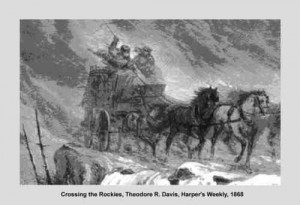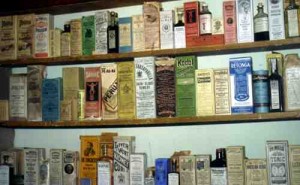Letter from Dorothy M. Brandt
Colorado Central – September 2008 – Colorado Central Magazine
Editors:
If the article entitled “Misnomer in Stucco” in the July 2008 issue, by Marcia Darnell, is to be construed as investigative or interpretive journalism, it leaves much to be desired. The title alone is incorrect since the word “history” has not appeared on the building nor in the museum identification for many years. The name of the museum is the San Luis Valley Museum. However, since apparently she obtained much of her information from a museum clerk, it is perhaps understandable, but inexcusable, for an article so distorted to be printed in a magazine such as yours.
Ms. Darnell selected for negative interpretation some of the items which have proven to be of the greatest interest to Valley schoolchildren. To see an Eskimo outfit (donated by a priest who came to the Valley), and to see an example of a tarantula, scorpion, and displays of inset camouflage, mimicry, etc., are opportunities to see things some Valley children never get to experience. To single out the arrowhead collection for the “Any place museum” is to relegate our most historically significant items, some thousands of years old, to irrelevance. Similarly, to suggest that our displays of a nineteenth-century schoolroom, trading post, post office, and railroad memorabilia could be “found in any museum throughout the West,” totally overlooks the fact that the displays were from the San Luis Valley and not from Iowa, Kansas, or New Jersey.
Some of the items which were apparently of no interest to Ms. Darnell, such as the antique doll house, hat collections, or button coat made by a local artisan, overlook the fact that “History” can be from 1930 as well as 1870. These are what local citizens have donated to be preserved for posterity in “their museum.”
The railroad displays, albeit limited, are local historical memorabilia. A railroad crossing [sign] from Hooper, Colo., is from here and not from some other obscure state. These are from our valley and space limitations preclude what we can and cannot display in our museum. We obviously do not have exhibit room for a railway engine! It is hard to understand what her criteria are, without elaborating on the extensive displays of ranching and farming paraphernalia, historical photographs, and maps. Nor is it fair to ignore the cabinet of our most valuable display which portrays the full 1864 buckskin-beaded costume of Kit Carson contemporary and frontiersman, Tom Tobin. Totally overlooked also is the unique display on South Carolina Catabwa Indians who came to settle in the Valley with the first Mormon pioneers. The Indian collection is signaled out for critical comment because the word “replica” appears on a few items without specific provenance. No reference is made to the highly important rare Ute Indian photographs of extreme historical significance.
Ms. Darnell compares the San Luis Valley Museum to the displays and programs of the Del Norte museum, but only briefly mentions the fact that the new San Luis Valley Museum has been open only for six months, and that we are not funded for programs and displays by a county, as is the case with the Del Norte museum.
The vast majority of our items on display are of local origin or significance. To single out three or four displays to identify the collections as an “Anyplace Museum” is a distortion and highly uninformed observation.
Perhaps Ms. Darnell would like to drive by the museum and see that her suggestion to change the name of the museum is blatantly outdated, since we have not portrayed it as an exclusive “history museum” for years, and yet we stress that virtually all our exhibits, with minimal exceptions, would be interpreted by any informed observer to be of historical or local significance. The negative portrayal of the San Luis Valley Museum can only be construed as based on totally uninformed reporting, and not in keeping with the quality of your publication. A museum is a place to learn, which is a point she apparently missed.
Dorothy M. Brandt
Chair
San Luis Valley Museum


